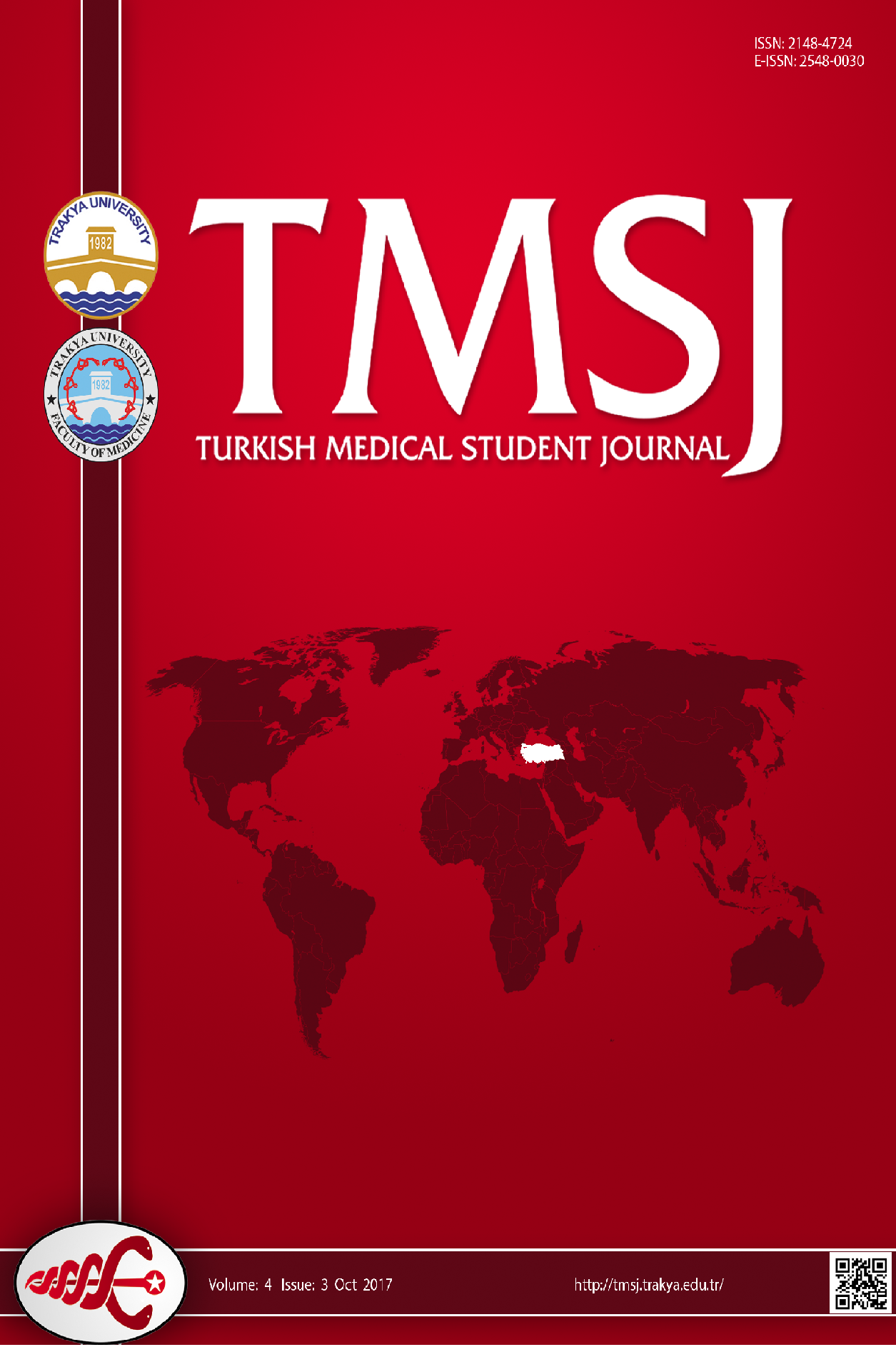
Turkish Medical Student Journal
Yazarlar: Diana-larissa BOGATU, Razvan HAİNAROSİE, Viroel ZAHİNEA
Konular:-
Anahtar Kelimeler:Laryngeal neoplasms,Larngoscopy,CO2- LASER
Özet: Aims: The objective of the study is to demonstrate the utilization of refined optic technology such as narrow band imaging in the intraoperative visualization and the circumference of the lesion. The resection/ablation line of the tumor is established according to these two parameters. The operative strategy is based on the premise that a better imaging of the tumor will allow more accurate resection margins to be obtained from an oncological point of view. Methods: This is a prospective study that lasted for 15 months and includes 50 patients with stage T1-T3 laryngeal cancer who, according to the European Laryngology Society criteria, were eligible for endoscopic endolaryngeal resection. The suspended microlaryngoscopy was used under general anaesthesia and the CO2-LASER for the resection of the cancerous lesion. The resection margins were defined through illumination of the surgical field with the endoscopic narrow band imaging polarized light. Tissue fragments prelevations were obtained from the resection margins defined by the narrow band imaging and extemporaneous control examinations were made.Results: Narrow band imaging technique has led to more accurate and secure resection margins from an oncological point of view after laryngeal endoscopic resection with CO2-LASER or with cold instruments, therefore lowering the risk of tumor remaining and relapse.Additionally, this technique avoids the necessity of a second surgical intervention thus decreasing the patient’s risks and hospitalization costs. Furthermore, a significant benefit is the limitation of the healthy peritumoral tissue excision hence a superior functional prognostic. Conclusion: Narrow band imaging associated with laryngeal endoscopic surgery plays an essential role in precancerous and cancerous laryngeal pathology helping the surgeon accomplish both goals - curative surgery and functional results